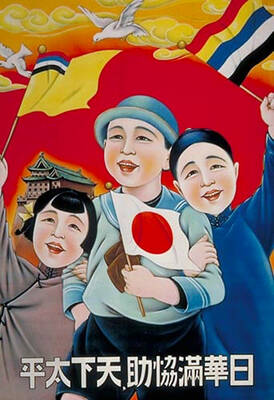In the heart of a massive new nature reserve in Australia’s far north, Aboriginal elder Dean Yibarbuk gazes reverentially at Dreamtime rock paintings created by his ancestors.
“This isn’t just land to us,” the dreadlocked indigenous leader says. “It’s part of our spirit.”
Yibarbuk’s people in Arnhem Land, east of Darwin, are part of a government program that aims to ease the poverty and poor health blighting many indigenous communities by rekindling Aborigines’ ancient connection to the land.
Under the scheme, the government last week created two adjoining nature reserves covering almost 20,500km² of remote wilderness in the Northern Territory.
As ochre-covered dancers performed celebration rites to the low drone of the didgeridoo, Environment Minister Peter Garrett declared the establishment of the Djelk and Warddeken Indigenous Protected Areas.
He said the declaration formalized management of the reserves by traditional landowners, recognizing them as custodians of their ancestral lands.
Garrett said Aborigines would control feral pests such as water buffalo and pigs and help minimize wildfires, while protecting rock art sites dating back 50,000 years and wilderness areas rivaling the nearby World Heritage-listed Kakadu National Park.
“Indigenous Protected Areas are one of Australia’s most successful conservation stories,” said Garrett, the lanky former frontman of rock band Midnight Oil, who is now one of Australia’s most prominent politicians.
“They protect Australia’s biodiversity while providing training and employment for Aboriginal people doing work that they love on their own country.”
Together the reserves cover an area twice as large as America’s Yellowstone National Park or almost two-thirds the size of Taiwan.
Yibarbuk said they would create jobs for Aborigines and give them the option to live a traditional nomadic lifestyle “on country,” away from the problems affecting many indigenous settlements.
“In too many communities our children run into trouble, a lot of drugs, a lot of violence,” he said .
“This is our opportunity for our people to get back to the bush, to live the real life.”
The IPA approach to alleviating grinding poverty and endemic ill health among Aborigines stands in marked contrast to the so-called “intervention” launched by the federal government in 2007.
Under that scheme, the government sent troops and police to help curb sex abuse and domestic violence in isolated communities, imposing alcohol bans and restrictions on welfare payments.
The program, which remains in force in many Northern Territory settlements, has been condemned as discriminatory by organizations such as the UN and Amnesty International.
Bawinanga Aboriginal Corporation general manager Matthew Ryan said the Djelk and Warddeken Indigenous Protected Areas system gave Aborigines a say in the future of their communities and their land.
“It’s about us looking after our country in our way,” he said.
“It’s not about having someone dictate how we run our country.”
The Australian National University’s Center for Aboriginal Economic Policy Research described the IPA scheme as a “quiet revolution” in the way remote indigenous communities were managed.
“By providing livelihood opportunities on country, the enormous challenges of improving Aboriginal well-being and health and education are being practically addressed,” ANU’s professor Jon Altman said.
A return to the bush may not be a practical option for the majority of Australia’s 450,000 Aborigines, many of whom live in cities and regional towns.
But Yibarbuk said it was now a possibility for his people, reversing the drift towards settlements that began soon after whites arrived in the area in the 1800s.
“The land’s still empty up here, now we want our people to come back,” he said.
“We say empty land, empty people — healthy land, healthy people.”

In recent weeks the Trump Administration has been demanding that Taiwan transfer half of its chip manufacturing to the US. In an interview with NewsNation, US Secretary of Commerce Howard Lutnick said that the US would need 50 percent of domestic chip production to protect Taiwan. He stated, discussing Taiwan’s chip production: “My argument to them was, well, if you have 95 percent, how am I gonna get it to protect you? You’re going to put it on a plane? You’re going to put it on a boat?” The stench of the Trump Administration’s mafia-style notions of “protection” was strong

Oct. 6 to Oct. 12 The lavish 1935 Taiwan Expo drew dignitaries from across the globe, but one of them wasn’t a foreigner — he was a Taiwanese making a triumphant homecoming. After decades in China, Hsieh Chieh-shih (謝介石) rose to prominence in 1932 as the foreign minister for the newly-formed Japanese puppet state of Manchukuo in today’s Northeast China. As ambassador to Japan, he was to represent the last Qing emperor Puyi (溥儀) at the event’s Manchuria Pavillion, and Taiwan’s governor-general welcomed him with the honors of a state guest. Hsieh also had personal matters to attend to — most

Late last month US authorities used allegations of forced labor at bicycle manufacturer Giant Group (巨大集團) to block imports from the firm. CNN reported: “Giant, the world’s largest bike manufacturer, on Thursday warned of delays to shipments to the United States after American customs officials announced a surprise ban on imports over unspecified forced labor accusations.” The order to stop shipments, from the US Customs and Border Protection (CBP), came as a surprise to Giant, company officials said. Giant spokesman Ken Li (李書耕) said that the CPB never visited the company’s factories to conduct on-site investigations, nor to interview or

Despite an abundance of local dance talent, Taiwan has no renowned ballet company to call its own. But great troupes do visit — including the English National Ballet this past May. And once a year, Art Wave’s (黑潮藝術) annual Ballet Star Gala brings together some of the world’s pre-eminent principal dancers for a cornucopia of pas de deux. Organizer Wang Tzer-shing (王澤馨) said this year’s edition of the gala, to be staged today and tomorrow at the National Theater in Taipei, is exceptionally balanced between classical and modern ballet styles. Modern ballet pieces by prominent choreographers — Rudi van Dantzig, essential to